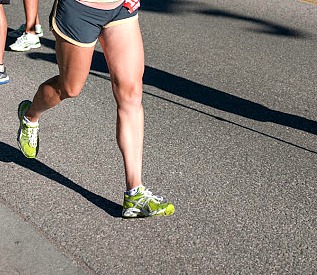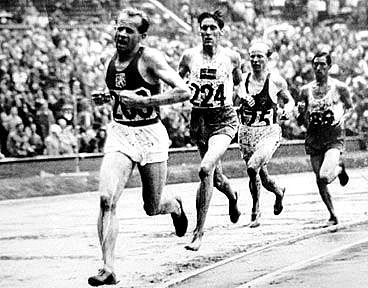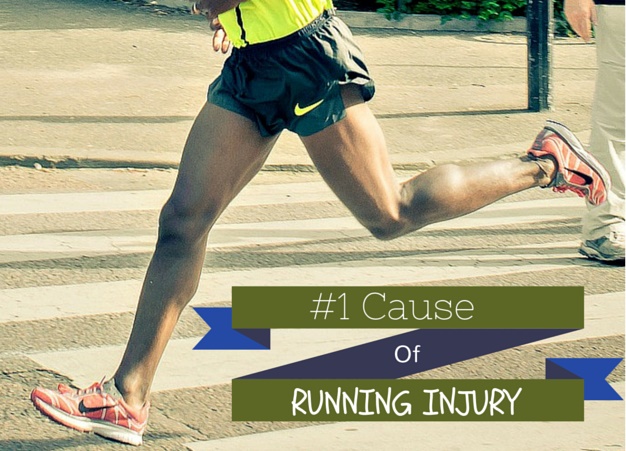The #1 reason for running injury is high impact landings.
During the past couple of decades, researchers started suspecting that thick sole running shoes influenced impact during running.
For example, regular running shoes impair our innate shock-adjusting behavior causing us to generate more impact with the ground when we run [1].
#1 Reason for Running Injury

Robbins and Gouw [1] reported that runners ran with significantly less impact in running shoes from 1977 compared to more modern running shoes.
Studies since then have also found that runners ran with less impact in older running shoes, suggesting that our innate shock-adjusting behavior kicks in as soon as shoe cushioning deteriorates.
Hard Midsoles are Better
Older running shoes develop harder midsoles because the compressible materials of the shoe deteriorates across time, and when it comes to impact protection, harder midsoles are better than softer ones. For instance, Luethi et al. [2] found that impact reduced by 9% when runners ran in running shoes with harder midsoles.
More important, the researchers found that shock was reduced when runners ran barefoot (an even harder plantar surface) than in running shoes, suggesting that humans adjusts their foot strike behavior to avoid high impact landings in the absence of plantar cushioning.
(Click here to learn more about why barefoot runners land on their forefoot, not their heels)
Always Go Minimal
Before the 1970s, runners ran in athletic footwear radically different from today’s running shoes.
Before the modern running shoe, many runners masterfully adopted a forefoot running style because they ran in running shoes without cushioning and support, many even ran barefoot, shown below.

Running in near barefoot-like conditions resulted in the mental acuity to maintain a forefoot running style that surpassed the running techniques exhibited by today’s average jogger.
(Many elite runners today land on their forefeet. Here are my articles about why forefoot running is better for performance than heel strike running).
The Take Home Message
Most running injuries are the consequence of running shoes that are engineered with advanced technology and maximal protection. Yet, an abundance of research conflicts with the claims that such footwear prevents injuries.
Impact-free running relies on the interdependence between running barefoot and running by feel and the truth is, we run safer when we are barefoot.
The ‘unpleasant’ feeling you get when you first try barefoot running eventually vanishes when you have adopted a forefoot strike landing, which is the apparent advantage afforded by the evolution of human endurance running.
Click here to find out why you should try running barefoot more than once.
More From Run Forefoot:
Forefoot Running Shoes – Still of afraid of barefoot running? The next best thing you can do to help your forefoot running form is to wear barefoot style running shoes.
ITBS – Tips and advice on how to prevent and treat ITBS.
No More Injuries – Here you’ll read about how forefoot running is mechanically capable of preventing injury.
Don’t Overthink Your Form – Read why you shouldn’t obsesses over every aspect of your form while you run.
How to Run Barefoot – Tips and Advice on how you should learn barefoot running.
References:
[1]. Robbins SE and Gouw GJ. Athletic footwear and chronic overloading: a brief review. Sports Med, 1990; 9(2):77-85.
[2]. Luethi SM, Denoth L, Kaelin X, et al. The influence of the shoe on foot movement and shock attenuation in running. In Jonsson B (Ed.) Biomechanics X-B, pp. 931-935, Human Kinetics
Publishers, Champaign II, 1987
Bretta Riches
BSc Neurobiology; MSc Biomechanics candidate, ultra minimalist runner & founder of RunForefoot. I was a heel striker, always injured. I was inspired by the great Tirunesh Dibaba to try forefoot running. Now, I'm injury free. This is why I launched Run Forefoot, to advocate the health & performance benefits of forefoot running and to raise awareness on the dangers of heel striking, because the world needs to know.
Latest posts by Bretta Riches (see all)
- Does Foot Strike Really Matter in Running? YES! - 17/04/2024
- Heel Lifts Increase Injury in Runners - 16/04/2024
- Are Minimalist Shoes Good for Seniors? YES! - 14/04/2024


Leave a Reply